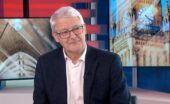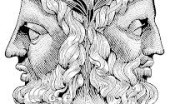Molly Minturn - My family is heartbroken to share that my father died in surgery on Monday, Feb. 10. It…
John Glenn, American Hero of the Space Age, Dies at 95
Written by Diana Thebaud Nicholson // December 8, 2016 // Aviation & Aerospace // Comments Off on John Glenn, American Hero of the Space Age, Dies at 95
John Glenn, American Hero of the Space Age, Dies at 95
John Glenn, a freckle-faced son of Ohio who was hailed as a national hero and a symbol of the space age as the first American to orbit Earth, then became a national political figure for 24 years in the Senate, died on Thursday in Columbus, Ohio. He was 95.
(NYT) Ohio State University announced his death. Mr. Glenn had recently been hospitalized at the university at the James Cancer Center … He had heart-valve replacement surgery in 2014 and a stroke around that time.
He had kept an office at the John Glenn College of Public Affairs, which he helped found, and also had a home in Columbus.
In just five hours on Feb. 20, 1962, Mr. Glenn joined a select roster of Americans whose feats have seized the country’s imagination and come to embody a moment in its history, figures like Lewis and Clark, the Wright brothers and Charles Lindbergh.
To the America of the 1960s, Mr. Glenn was a clean-cut, good-natured, well-grounded Midwesterner, raised in Presbyterian rectitude, nurtured in patriotism and tested in war, who stepped forward to risk the unknown and succeeded spectacularly, lifting his country’s morale and restoring its self-confidence.
It was an anxious nation that watched and listened that February morning, as Mr. Glenn, 40 years old, a Marine Corps test pilot and one of the seven original American astronauts, climbed into Friendship 7, the tiny Mercury capsule atop an Atlas rocket rising from the concrete flats of Cape Canaveral in Florida.
The Cold War had long stoked fears of nuclear destruction, and the Russians seemed to be winning the contest with their unsettling ascent into outer space. Two Russians, Yuri A. Gagarin and Gherman S. Titov, had already orbited Earth the year before, overshadowing the feats of two Americans, Alan B. Shepard and Virgil I. Grissom, who had been launched only to the fringes of space.
What, people asked with rising urgency, had happened to the United States’ vaunted technology and can-do spirit?
The answer came at 9:47 a.m. Eastern time, when after weeks of delays the rocket achieved liftoff. It was a short flight, just three orbits. But when Mr. Glenn was safely back, flashing the world a triumphant grin, doubts were replaced by a broad, new faith that the United States could indeed hold its own against the Soviet Union in the Cold War and might someday prevail.
No flier since Lindbergh had received such a cheering welcome. Bands played. People cried with relief and joy. Mr. Glenn was invited to the White House by President John F. Kennedy and paraded up Broadway and across the land. A joint meeting of Congress stood and applauded vigorously as Mr. Glenn spoke at the Capitol.
In his political history of the space age, “…The Heavens and the Earth,” the author Walter A. McDougall described Mr. Glenn’s space mission as a “national catharsis unparalleled.” …
Mr. Glenn did not return to space for a long time. Kennedy thought him too valuable as a hero to risk losing in an accident. So Mr. Glenn resigned from the astronaut corps in 1964, became an executive in private industry and entered politics, serving four full terms as a Democratic senator from Ohio and in 1984 running unsuccessfully for the Democratic presidential nomination.
 Finally, 36 years after his Mercury flight, in the last months of his final Senate term, he got his wish for a return to orbit. Despite some criticism that his presence on the mission was a political payoff, a waste of money and of doubtful scientific merit, the hero of yesteryear brought out the crowds again, cheering out of nostalgia and enduring respect as he was launched aboard the space shuttle Discovery on Oct. 29, 1998. At 77, he became the oldest person to go into space.
Finally, 36 years after his Mercury flight, in the last months of his final Senate term, he got his wish for a return to orbit. Despite some criticism that his presence on the mission was a political payoff, a waste of money and of doubtful scientific merit, the hero of yesteryear brought out the crowds again, cheering out of nostalgia and enduring respect as he was launched aboard the space shuttle Discovery on Oct. 29, 1998. At 77, he became the oldest person to go into space.
In retirement from the Senate, Mr. Glenn lived with his wife of 73 years, Anna (he always called her Annie), in a suburb of Washington in addition to Columbus. Ohio State University is the repository of papers from his space and political careers.
“John always had the right stuff,” President Obama said in a statement on Thursday, “inspiring generations of scientists, engineers and astronauts who will take us to Mars and beyond — not just to visit, but to stay.
Mr. Glenn began his journey to fame in World War II. In 1939, he enrolled at Muskingum College in his hometown to study chemistry, but he took flying lessons on the side. Shortly after the attack on Pearl Harbor on Dec. 7, 1941, he signed up for the Naval Aviation cadet program and after pilot training opted to join the Marines. As a fighter pilot, he flew 59 combat missions in the Pacific, earning two Distinguished Flying Crosses and other decorations.
Mr. Glenn saw more action in the Korean War, flying 90 combat missions and winning more medals. He put his life on the line again as a military test pilot in the early days of supersonic flight. In 1957, just months before the Soviet Union launched its first Sputnik satellite, he made the first transcontinental supersonic flight, piloting an F8U-1 Crusader from Los Angeles to New York in record time: 3 hours 23 minutes 8.4 seconds.
 Then, in 1959, newly promoted to lieutenant colonel, he heeded a call for test pilots to apply to be astronauts for the fledgling National Aeronautics and Space Administration. He and six other pilots were selected in April of that year. (The original Mercury 7 included Mr. Glenn, Mr. Shepard, Mr. Grissom, Walter Schirra, Gordon Cooper, Deke Slayton and Scott Carpenter. Mr. Glenn was the last surviving one.)
Then, in 1959, newly promoted to lieutenant colonel, he heeded a call for test pilots to apply to be astronauts for the fledgling National Aeronautics and Space Administration. He and six other pilots were selected in April of that year. (The original Mercury 7 included Mr. Glenn, Mr. Shepard, Mr. Grissom, Walter Schirra, Gordon Cooper, Deke Slayton and Scott Carpenter. Mr. Glenn was the last surviving one.)




